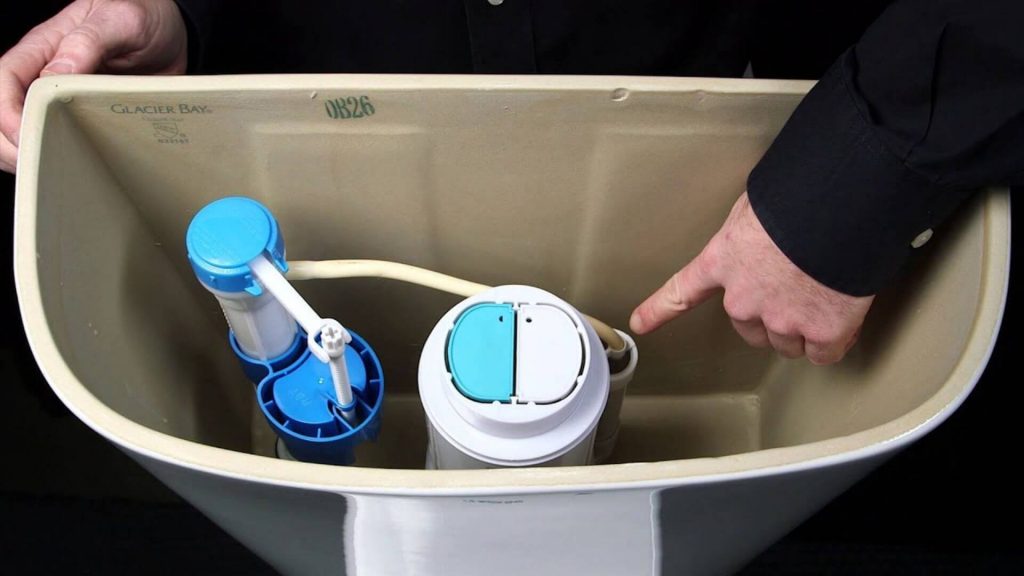Introduction:
Facing a toilet that won’t flush is undoubtedly an inconvenience that disrupts the rhythm of daily life. When there’s no water in the tank, the frustration intensifies. However, before you call a plumber in desperation, it’s worth exploring the common reasons behind this issue and attempting some simple troubleshooting. This comprehensive guide will lead you through a step-by-step process to identify and fix the problem, ensuring that your toilet is back to its flushing best in no time.
I. Preliminary Checks:
Ensuring Water Supply
Before diving into the intricacies of your toilet’s internal mechanisms, start with a basic check of the water supply. Ensure that the water valve connected to your toilet is fully open.
Additionally, inspect the water supply line for any visible leaks. Without a steady water supply, even the most sophisticated toilet won’t function properly.
II. Identifying the Problem:
Inspecting Flush Handle and Chain
The flush handle and chain are fundamental components of the toilet’s flushing mechanism. Begin by checking for any disconnections or malfunctions in the flush handle.
Adjust or reattach the chain if necessary. Sometimes, a simple realignment of these components can resolve the issue and restore your toilet’s ability to flush.
III. Water Level Adjustment:
Ensuring Proper Fill
A properly functioning toilet relies on an adequate water level in the tank. Check the water level, and if it’s not within the recommended range, adjust the float. The float is responsible for controlling the water level in the tank.
A well-adjusted float ensures that the tank fills to the appropriate level after each flush, contributing to the toilet’s overall efficiency.
IV. Checking the Fill Valve:
Inspecting for Issues
The fill valve plays a crucial role in refilling the tank after each flush. Inspect the fill valve for any blockages or malfunctions. Clean or replace the fill valve components as needed.
A smoothly functioning fill valve ensures a timely and sufficient supply of water, preventing flushing issues.
V. Addressing Clogs:
Using Plungers and Augers
Clogs in the toilet bowl are a common cause of flushing problems. Begin with a plunger to clear minor blockages. For more stubborn clogs, a toilet auger can be employed. Properly addressing clogs ensures that water can flow freely through the drain, facilitating effective flushing.
VI. Water Pressure Examination:
Assessing Overall Flow
Low water pressure can impact the toilet’s flushing capability. Check for issues affecting the overall water pressure in your house. Addressing any low water pressure problems will contribute to the optimal performance of your toilet.
VII. Valve and Pipe Inspection:
Ensuring Proper Functionality
The flush valve and overflow pipe are critical components that need to function seamlessly for a toilet to flush properly. Inspect these components for signs of damage or blockages.
Clean or replace parts as needed to maintain an unobstructed flushing mechanism.
VIII. Professional Assistance:
Seeking Expert Help
If all your DIY efforts fail and the problem persists, it may be time to call in a professional plumber. Plumbers have the expertise to identify and address underlying issues that might be challenging for the average homeowner to diagnose and fix.
FAQs:
Q1: Why won’t my toilet flush even when I press the handle?
A1: Check the flush handle and chain for disconnections or malfunctions. Adjust or reattach the chain as needed.
Q2: How do I adjust the water level in my toilet tank?
A2: Verify the water level in the tank and adjust the float to the appropriate level to ensure proper flushing.
Q3: What should I do if plunging doesn’t unclog my toilet?
A3: Consider using a toilet auger for more stubborn clogs. If the problem persists, seek professional assistance.
Conclusion:
A toilet that won’t flush due to no water in the tank can be a vexing issue, but armed with the right troubleshooting steps, you can often resolve the problem on your own. Regular maintenance and a proactive approach to addressing issues will keep your toilet in optimal working condition, ensuring a smooth and hassle-free flushing experience. Remember, if all else fails, don’t hesitate to enlist the help of a professional plumber to diagnose and fix the problem efficiently. Your toilet will thank you with reliable and consistent performance.

A group of home improvement enthusiasts and bathroom design experts, combines in-depth knowledge and a shared passion to deliver engaging, informative content that guides readers through the world of bathroom innovation and style.

Leave a Reply